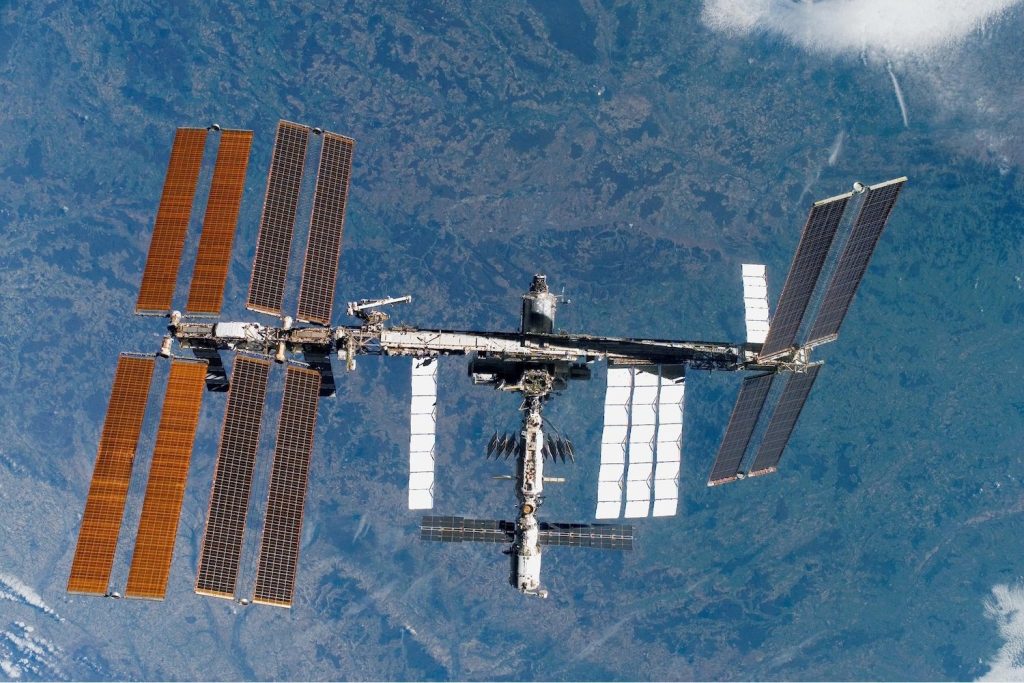
Growing Air Leak in Russian Segment Now Deemed Greatest ISS Risk, Report Reveals (Image Credit: Gizmodo-com)
The International Space Station (ISS) houses astronauts at an altitude of 250 miles above the surface of Earth in a (mostly) sealed environment. For the past five years, however, air has been escaping at an increasing rate from a tunnel that connects a docking port to a Russian module. The leak was addressed in a new report, which revealed the true severity of the issue and the risk it poses to the crew.
The report, published Thursday by NASA’s Office of Inspector General, details how the ISS program had elevated the air leak to the highest level of risk based on its likelihood and severity. The heightened risk probability was the result of a noticeable increase discovered in February in the rate of air that has been leaking from Russia’s Zvezda module, which had doubled from one pound of air per day to a little over two pounds.
The OIG report highlights several other risks, including limited evacuation options for the crew during emergencies, the absence of a deorbit vehicle in the ISS deorbit plan, and rising maintenance costs for the station.
The leak was first discovered in September 2019. Roscosmos reported the detection of an air leak found in the vestibule (named PrK) that connects a docking port to the Russian Zvezda module, which the space agency had launched to low Earth orbit in July 2000. The rate of air leaking from the hole increased around a week before the February 14 launch of the Progress MS-26 cargo spacecraft, which docked to the aft end of Zvezda. The hatch that connects the module to the ISS remained open for five days as the crew offloaded the cargo from Progress MS-26 onto the space station, but was closed shut afterwards.
In May and June, NASA and Roscosmos met to discuss the ISS air leak, with NASA officials noting that Roscosmos “is confident they will be able to monitor and close the hatch to the Service Module prior to the leak rate reaching an untenable level,” according to the report. However, the two space agencies can’t seem to agree on the point at which the leak should be considered untenable.
In the meantime, NASA and Roscosmos are monitoring the air leak and preparing to close the hatch to the service module when access is not required in order to minimize the amount of air lost, as well as to isolate the leak itself from the rest of the space station. If it becomes necessary to permanently shut off the hatch should the leak rate became unmanageable, the ISS would function normally, except there would be one less docking port for spacecraft delivering cargo to the space station. With the hatch closed, the ISS would also require more propellant to maintain its altitude and attitude (closing the hatch could impact the operation of the orbital lab, requiring the ISS’s propulsion system to make more frequent or intense orbital adjustments).
Despite giving it the highest level of risk, NASA sought to underplay the hazard posed by the air leak during a recent press conference. Robyn Gatens, director of the ISS program at NASA, told reporters on Friday that recent repair work had reduced the leak rate by about one third, SpaceNews reported.
The source of the leak remains unknown, but there haven’t been other air leaks discovered on the ISS as of June. The ISS has been in orbit for nearly 25 years, and the harsh environment of space has taken its toll on the orbiting lab. Although the ISS is set to retire by 2031, plunging itself towards an isolated region of the Pacific Ocean, NASA is now considering extending its operations should its commercial replacements not be ready to take its place by that time. However, extending the ISS’s lifespan increases the risk posed by its aging structures and demands “significant funding” for continued operation and maintenance, according to the inspector general report.
“ISS Program officials expect continuing operations of the Station will require further repairs, and upgrades of key replaceable parts may be more difficult to acquire as suppliers decrease or cease production,” the report reads. The Office of Inspector General recommends that NASA develops orbital debris tracking tools to avoid further damage to the structure of the space station and document safety contingency plans for the crew on board in case of an emergency.
The ISS has provided NASA with valuable access to low Earth orbit over the years, and the space agency is going to have to give that up as a new era of commercialized spaceflight starts to take over.
More: An Excruciatingly Detailed Breakdown of How NASA Plans to Destroy the ISS





